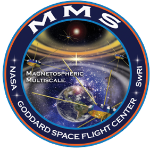Shock-generated transients, such as hot flow anomalies (HFAs), upstream of planetary bow shocks, play a critical role in electron acceleration. Using multimission data from NASA's Magnetospheric Multiscale and ESA's Cluster missions, we demonstrate the transmission of HFAs through Earth's quasi-parallel bow shock, accelerating electrons to relativistic energies in the process. Energetic electrons initially accelerated upstream are shown to remain broadly confined within the transmitted transient structures downstream, where they get further energized due to the elevated compression levels potentially by betatron acceleration. Additionally, high-speed jets form at the compressive edges of HFAs, exhibiting a significant increase in dynamic pressure and potentially contributing to further localized compression. Our findings emphasize the efficiency of quasi-parallel shocks in driving particle acceleration far beyond the immediate shock transition region, expanding the acceleration region to a larger spatial domain. Finally, this study underscores the importance of a multiscale observational approach in understanding the convoluted processes behind collisionless shock physics and their broader implications.

 PDF version
PDF version
